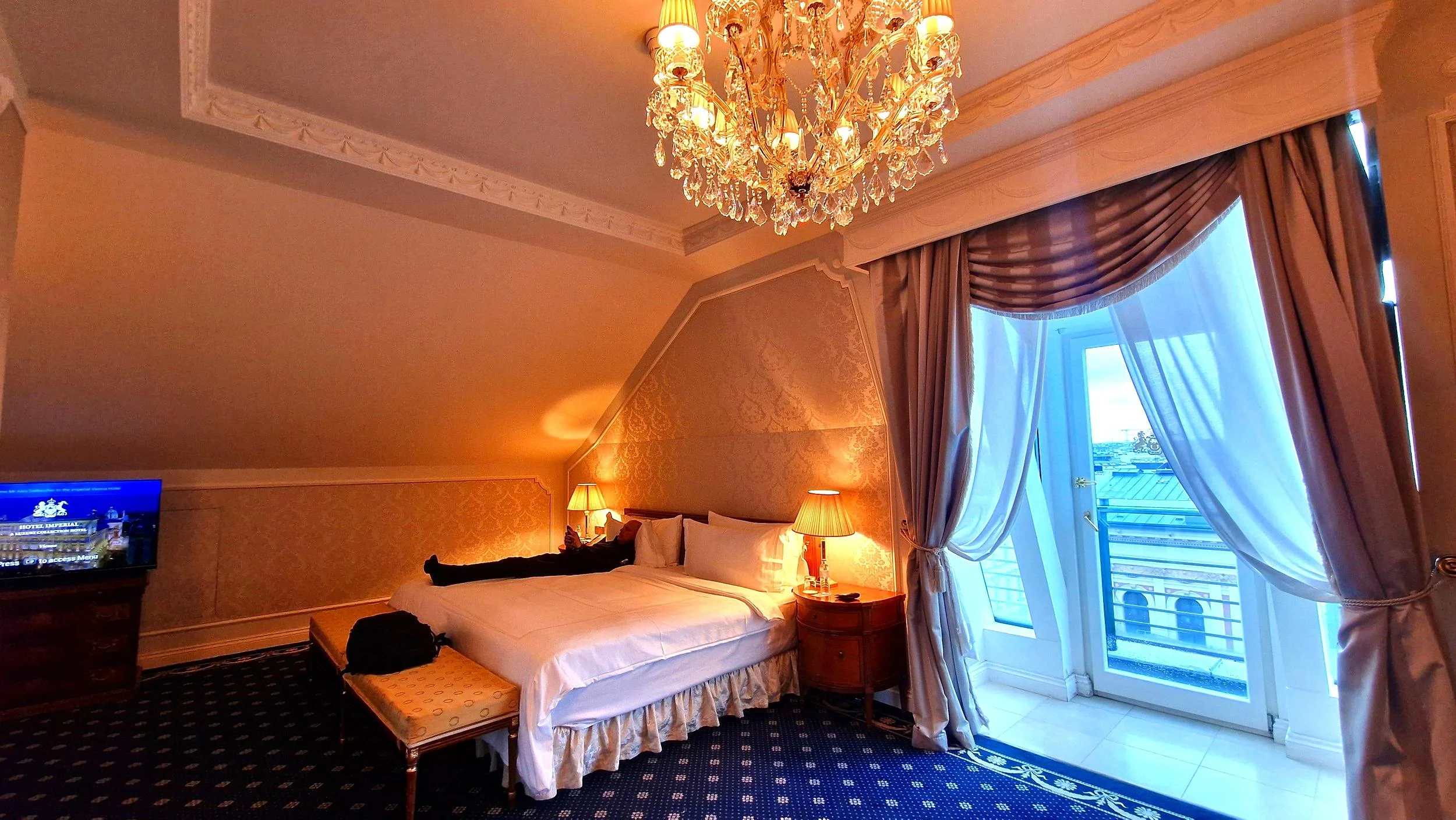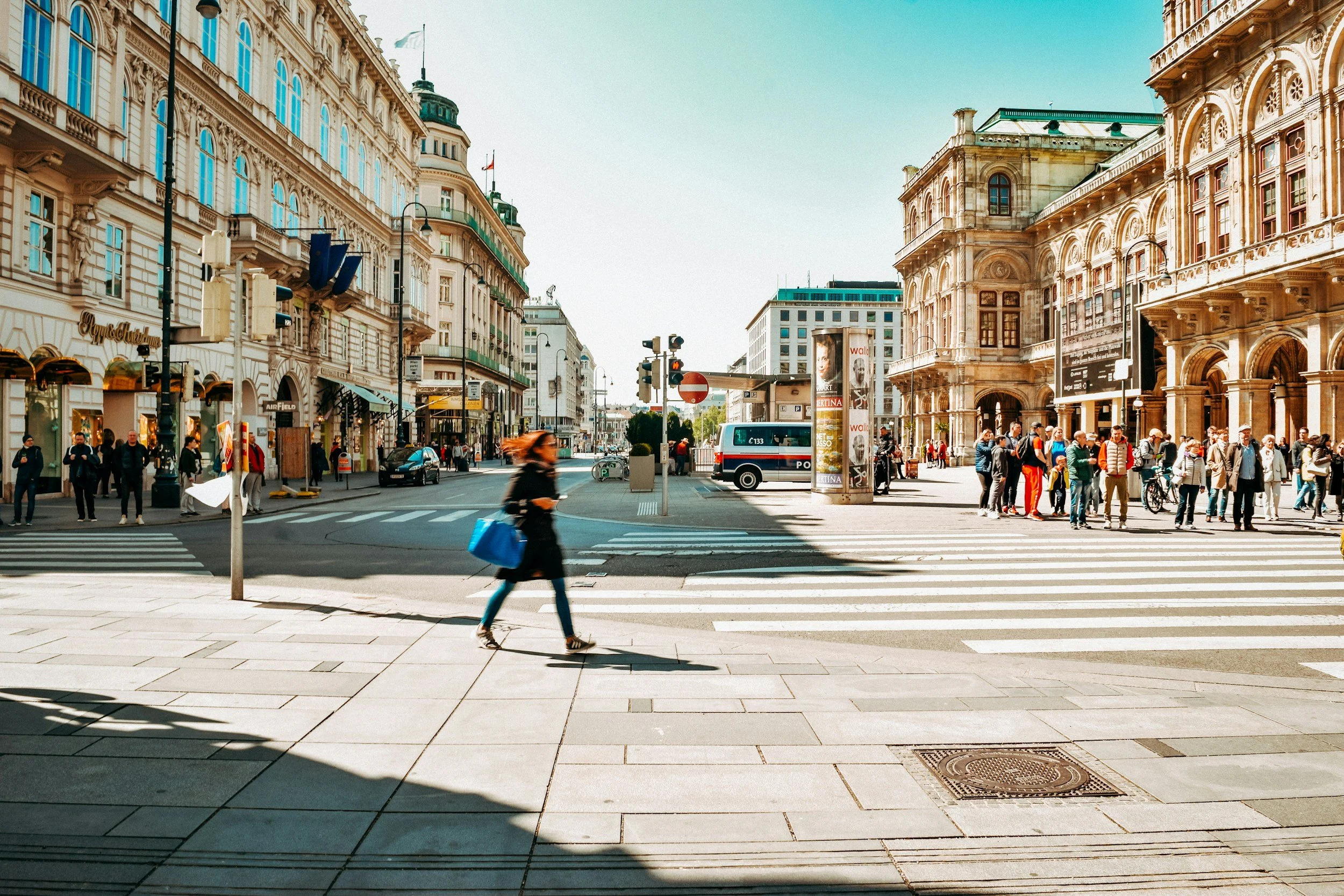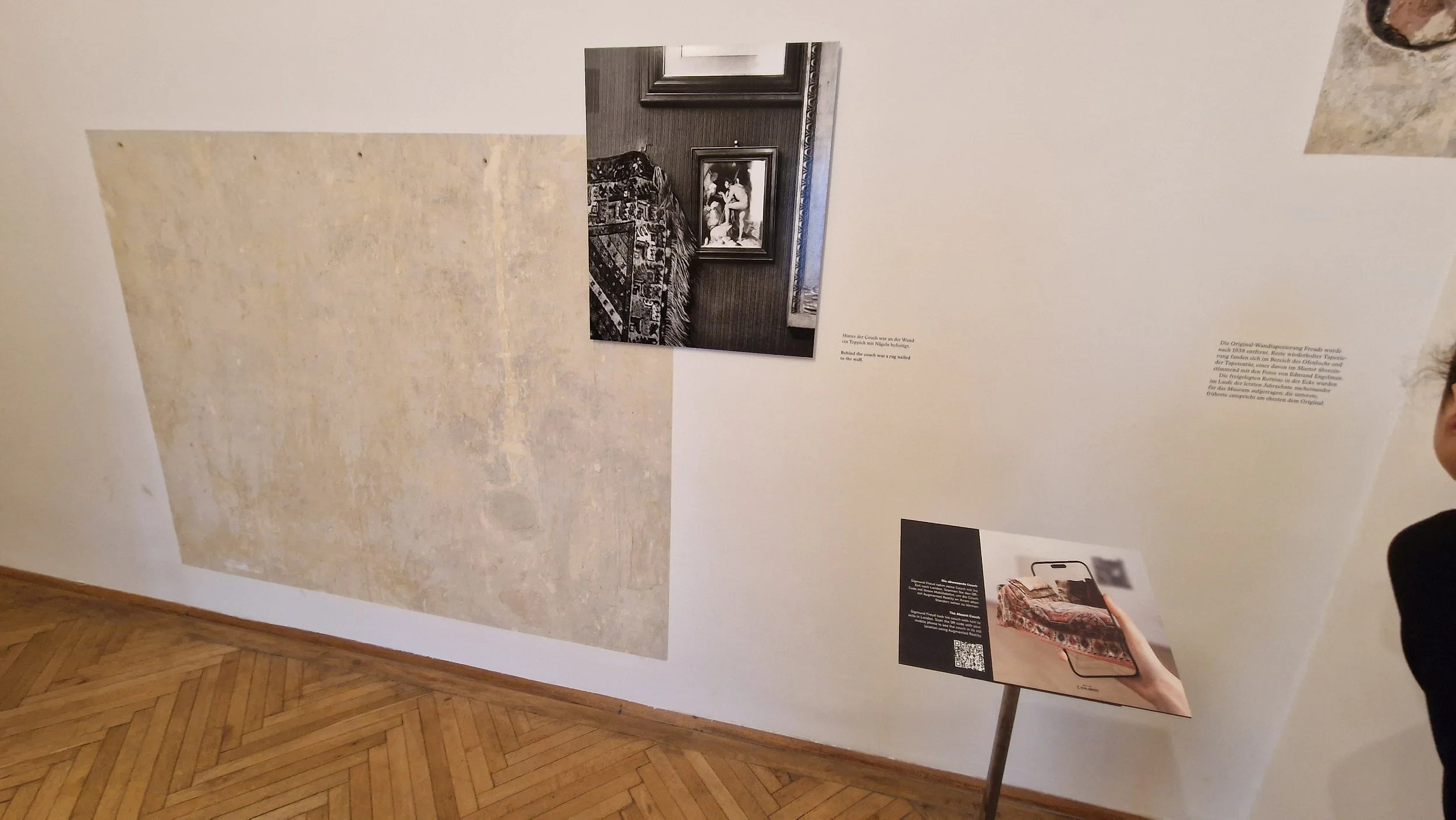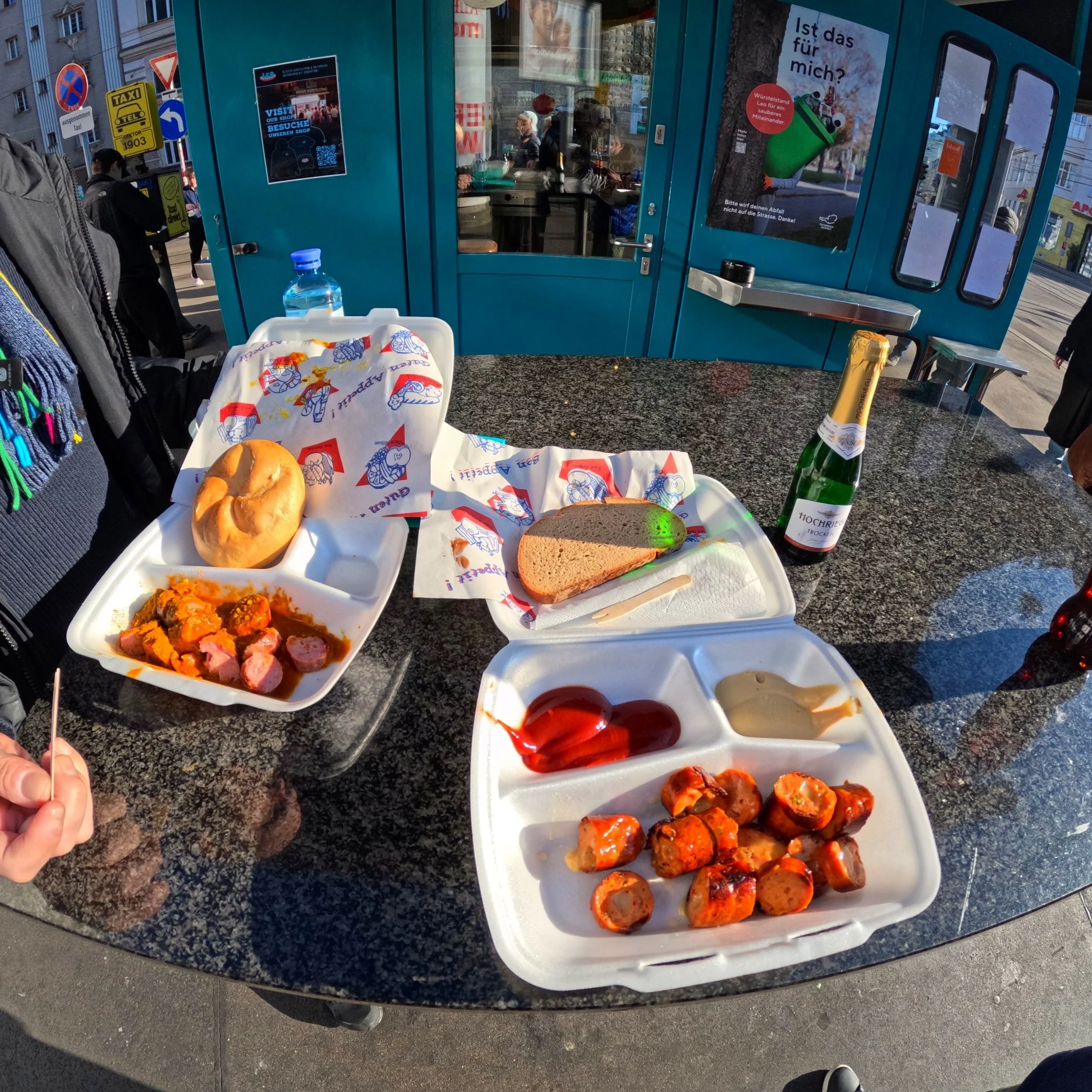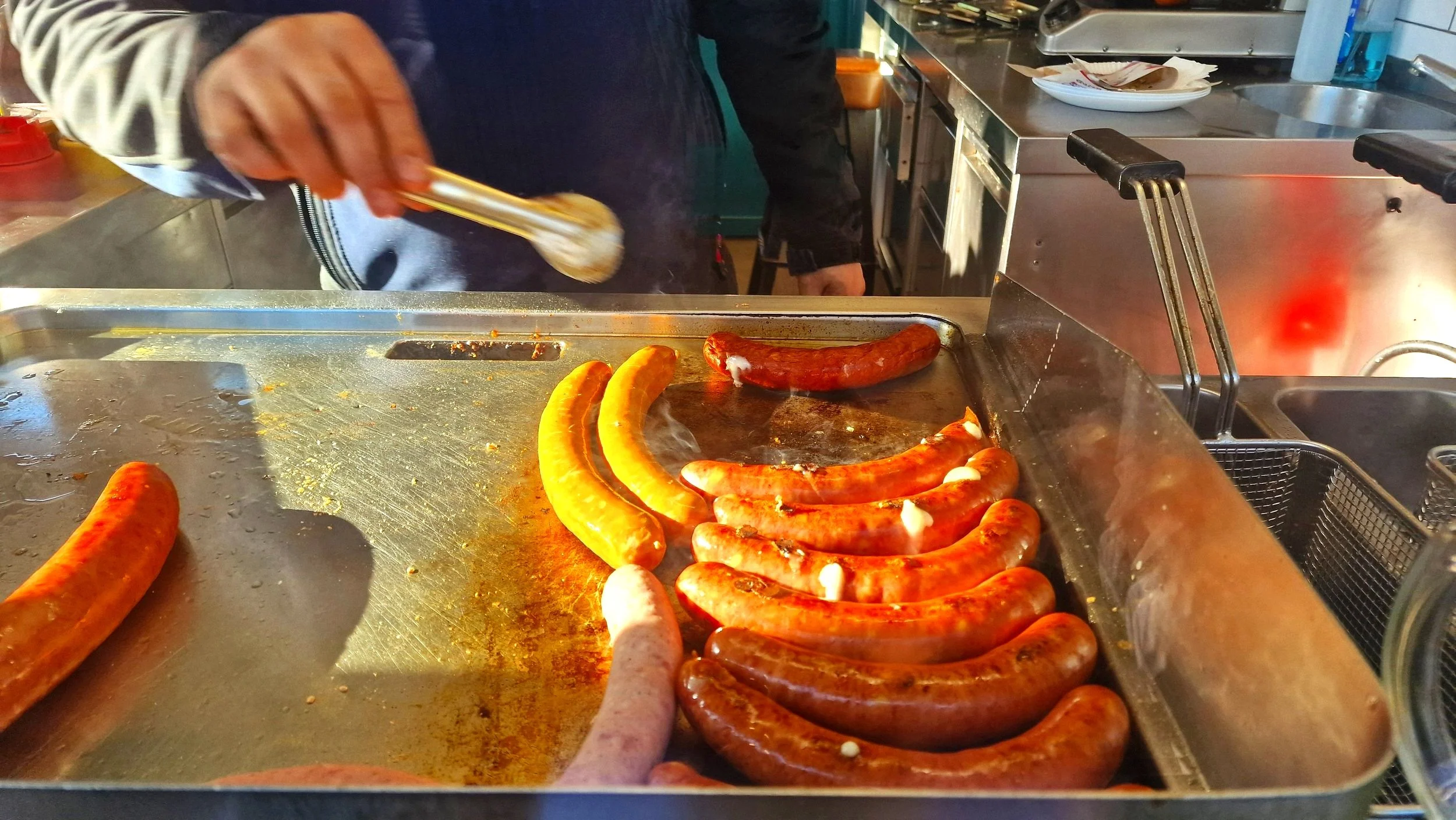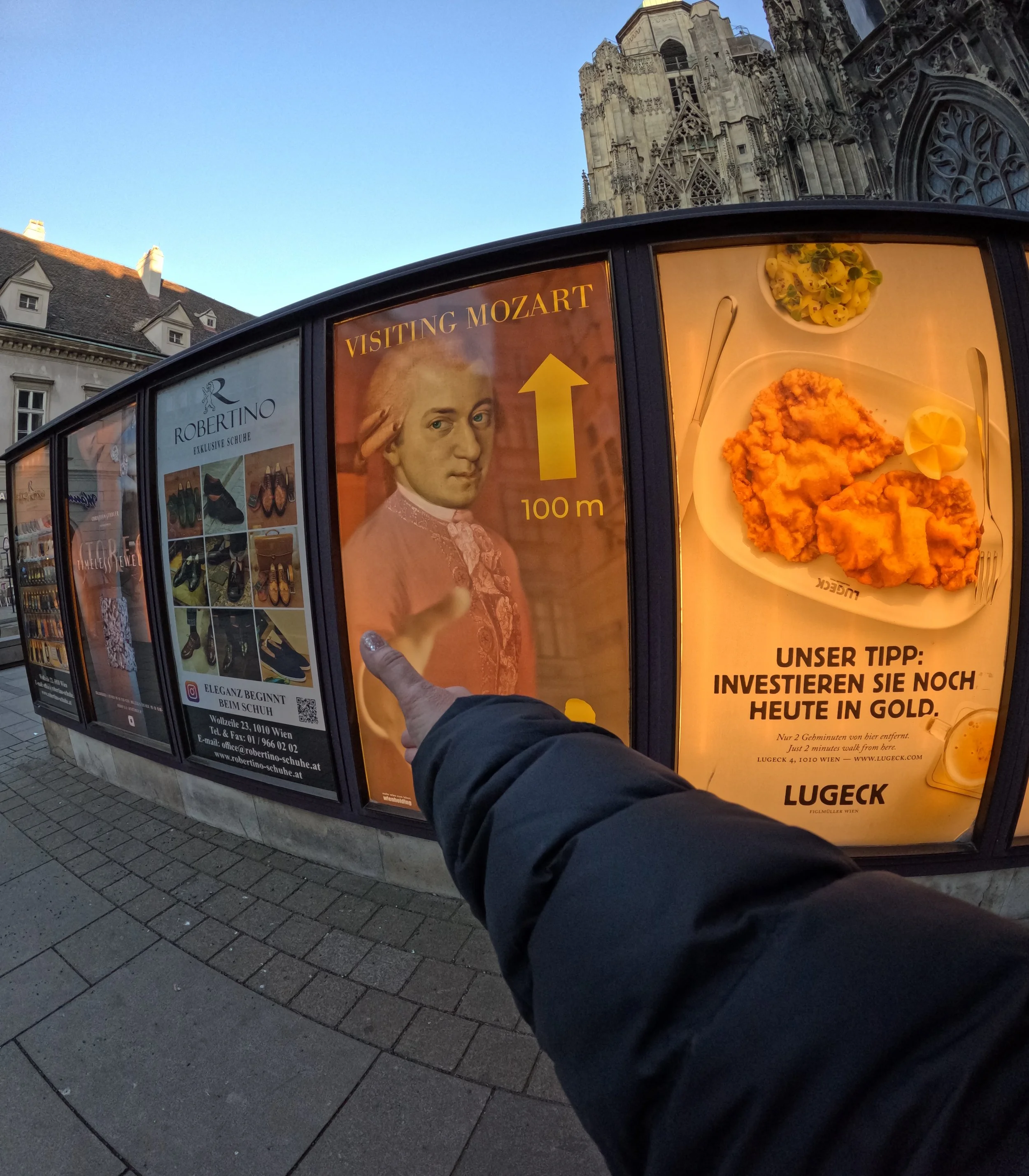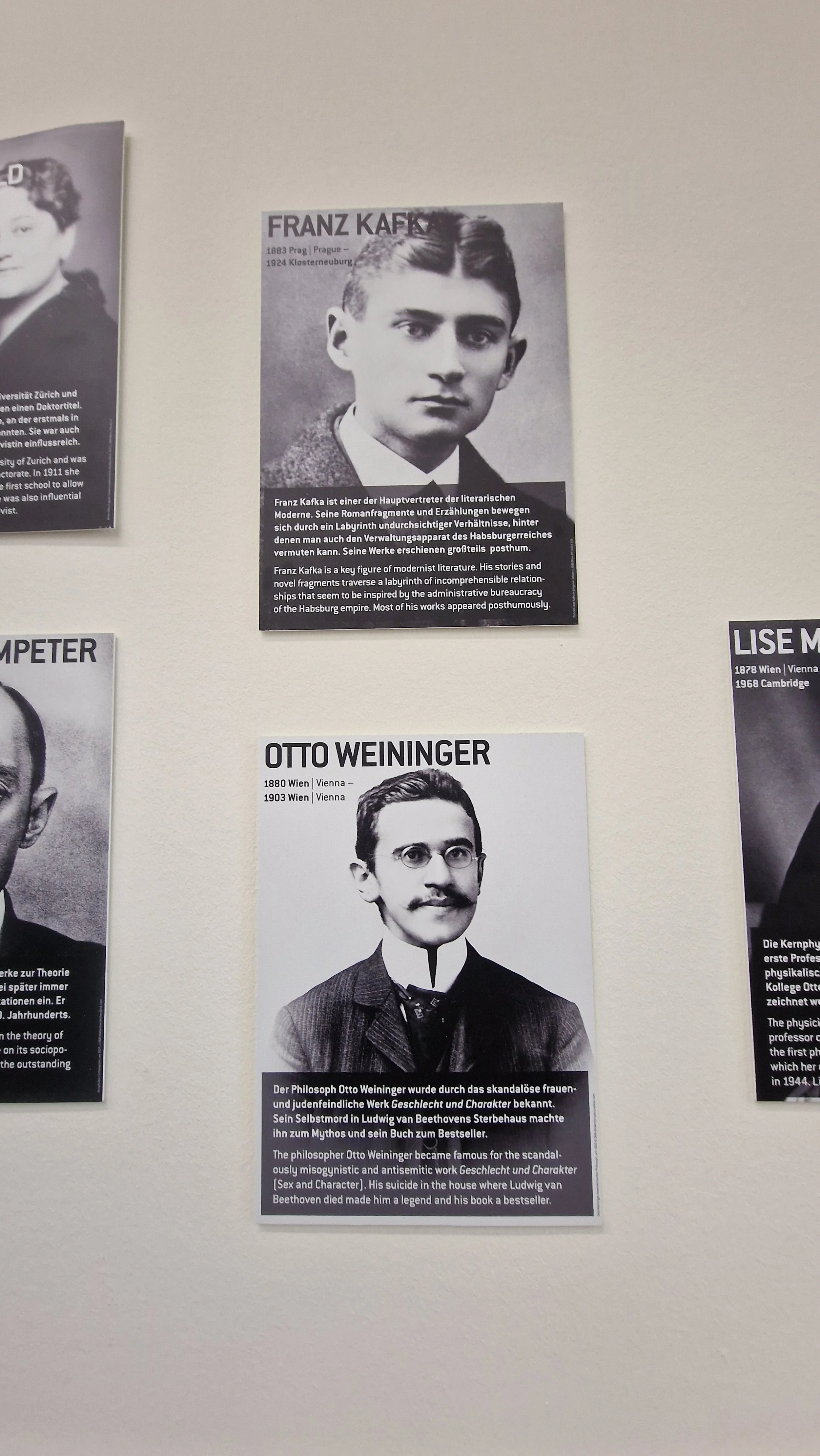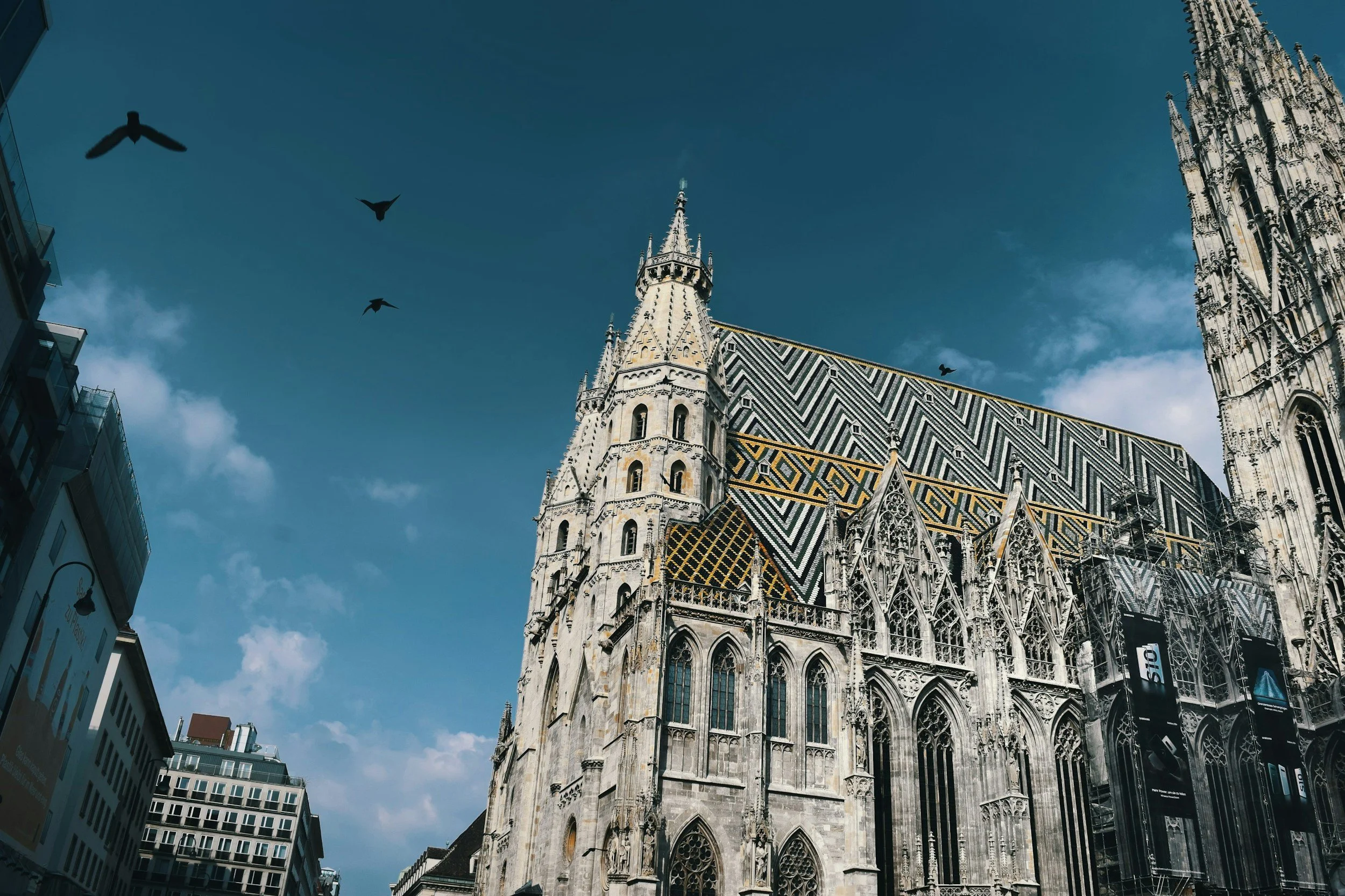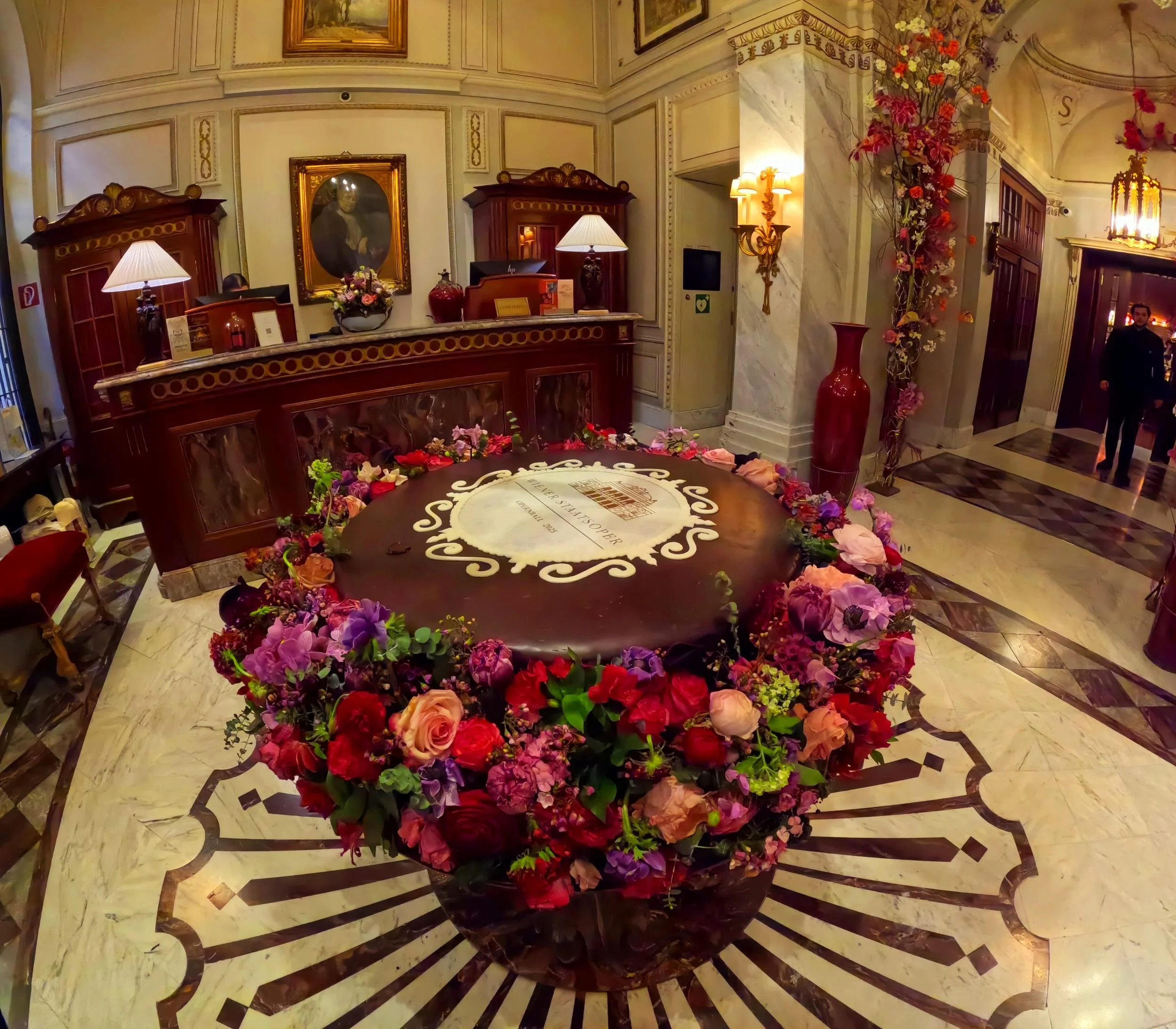Waltzing Through Vienna
Vienna, the city of waltzes, sachertorte, and enough gilded opulence to make even Marie Antoinette blush. It’s a place where history drips from every cobblestone, and the air hums with the ghosts of Mozart, Klimt, and Freud.
But let’s not forget Franz Kafka, who once described Vienna as a "mammoth dying village"—a sentiment that, while hilariously bleak, feels oddly fitting when you’re trudging through its warmer-than-usual February streets, dodging tourists wielding selfie sticks like medieval lances.
And yet, for all its contradictions—its grandeur and grit, its charm and chaos—Vienna has a way of seducing you. It’s a city that doesn’t just invite you to explore; it dares you to fall in love with its imperfections. And fall we did, laughing all the while at Kafka’s snark and disdain, as we wandered streets he likely cursed just 19 kilometers away from where he passed away in Kierling.
Dreamy Vienna
As our journey began, we departed from Milan Malpensa Airport aboard Austria Airlines, heading toward Vienna in the final days of February. Expecting to step into a city gripped by the crisp, biting cold of late winter, we were surprised to find the weather far milder than anticipated. The chill we had braced for was absent, replaced by a gentle coolness that made the arrival all the more welcoming—a contrast to how Vienna felt to me as a university student visiting in November/December 2006. The temperature differences from 19 years ago are undeniable.
Munchies aboard Austrian Airlines
Our first glimpse of this Vienna trip truly came with the grandeur of the Hotel Imperial, a historic gem that has hosted royalty, dignitaries, and rock stars alike. Every corner of this opulent hotel seemed to hum with stories from its illustrious past.
This trip wasn’t just about retracing Kafka’s steps. It was a belated anniversary trip we were taking which was postponed due to Alex’s cancer treatments since late 2024 that concluded just a week prior. We weren’t trying to do everything on this trip, but it was a period of waking up gently, dealing with his ongoing vertigo, and weighing what we could do while making him comfortable. Being an easily walkable city, we didn’t need to go far for much.
After a day spent wandering Vienna’s streets and soaking in its ambiance, we returned to the comfort of our room to witness one of the city’s grandest traditions, the 67th Vienna Opera Ball, televised live on February 27, 2025. Exhausted but content, we indulged in room service instead of going out as Alex had reached his need for rest earlier in the evening, savoring the perfect end to a day of exploration in one of Europe’s most elegant capitals.
Our room in Hotel Imperial, Vienna
Kafka’s Vienna: A Love-Hate Relationship
Our journey through Vienna was supposed to lead us to Kierling, a quiet village nearby where Franz Kafka spent his final days before passing due to complications from tuberculosis in 1924. Visiting Kierling felt like it would be completing a chapter I had been writing for years while creating art inspired by him. How could I not end up here, at the last stop of such a profound, albeit tortured, mind?
Kafka, indeed, quipped about Vienna as a, "mammoth dying village," implying a subtle Prague rivalry that colored his view of the Austrian capital. Still, Vienna’s grandeur seemed to haunt him at times, with its blend of cultural sophistication and societal stifling providing conflicting feelings he couldn’t escape. Hoping to visit the old Sanatorium Hoffmann in Kierling, now an apartment building and a museum dedicated to Kafka where he battled tuberculosis, I felt the weight of those words—and the immense pull of his legacy—coming full circle.
However, this is where I would feel a sense of disappointment prior to landing in Vienna. The thought of connecting with that chapter of his life felt almost imperative, but a day before our arrival, I discovered that the museum had been closed for due to severe water damage caused by the heavy rainstorms of January. This unexpected twist felt oddly fitting, echoing the unpredictability of life itself and underscoring that delicate balance Vienna seems to embody—between beauty and decay, history and the present, joy and melancholy.
View from the Belvedere
While I could understand Kafka's perspective, Vienna unfolded before me as an intriguing blend of vibrant culture and a lingering melancholia that perhaps gave way to Kafka’s harsh depiction. The city’s charm was undeniable, with its grand architecture, bustling art scene, and history that resonated in every corner, yet beneath the surface, there seemed to exist a quiet, almost sorrowful undertone that mirrored the struggles of its past. Kafka’s presence loomed large as we navigated the city.
Kafka’s connection to Vienna deepened further through Milena Jesenská, the love of his life and a woman of remarkable intellect and passion. Despite their profound and undeniable bond, Milena’s life choices were steeped in complexity and contradiction. She lived in Vienna, a city that served as both a haven and a stage for some of the most intricate early chapters of her story. Her relationship with Kafka, rooted in their soul-baring correspondence in "Letters to Milena," revealed a love that transcended the ordinary yet was inevitably shadowed by her refusal to leave her perpetually unfaithful husband, Ernst Pollak, for Franz Kafka.
This refusal, born of a mix of loyalty and perhaps her own internal conflicts, left Kafka in a place of yearning—loving her freely in spirit but never truly able to share his life with her in reality. Their story, etched in the letters they exchanged, stands as a testament to both the beauty and fragility of love attempting to flourish amidst the chaos of life’s constraints.
Passing through Vienna
Kafka’s complex relationship with Vienna mirrored the turbulent emotions that shaped his personal life and creative existence. The city, embodying both the allure of cultural richness and the suffocating weight of obligation, became a backdrop to his struggles with belonging and alienation. The aborted trip to Kierling, due to the unexpected heavy rains and subsequent structural damage to the museum, could be seen as a poignant extension of this turmoil—a physical manifestation of the missed connections and disappointments that pervaded much of Kafka’s world.
Ultimately, Vienna stood not only as a stage for his external challenges but also as a symbol of the internal conflicts that defined him, leaving an indelible mark on his legacy.
The Indulgence of Hotel Sacher
The Sacher has its own embroidery team…
After one night at the Hotel Imperial, we switched to Hotel Sacher since Alex has good rapport with them as a brand, being a hotelier himself. He had been wanting to bring us there since he first attended a conference for LVMH, and wanted to return when he had the energy post-chemo and radiation therapy. We happily obliged.
Eggies and Prosecco
Staying at Hotel Sacher was nothing short of an experience in opulence. The mornings began with a decadent breakfast spread that paired perfectly with the elegance of our surroundings—the aroma of freshly baked pastries mingling with the rich, velvety coffee served on delicate porcelain. The allure continued into the evening as we took aperitivi in the sultry red ambiance of the hotel's historic lounge, where the subtle lighting and plush red furnishings evoked an irresistible sense of luxury. Our suite was a haven of extravagance, adorned with ornate décor, gilded mirrors, and sumptuous fabrics, offering a level of comfort and sophistication that made us feel as though we had stepped into a bygone era of maximalist grandeur.
The Swanky Hotel Sacher Lounge
I'm sure our dear Kafka would scoff at the obscene decadence, but as someone who spent their childhood growing up in asbestos-laden, lead paint chip military housing and staying at a hostel the last time I was here, I'm not saying no this. Sorry, Franz.
Art, Freud, and Würstelstands
Gustav Klimt's "The Kiss" (1908) | Österreichische Galerie Belvedere in Vienna
No visit to Vienna is complete without surrendering to its cultural treasures, and so we began with a pilgrimage to the heart of its artistic soul. At the Leopold Museum, we found ourselves utterly spellbound by the haunting works of Egon Schiele and the golden brilliance of Gustav Klimt. Their pieces seemed to pulsate with emotion, bridging the gap between the past and present, coaxing us to see the human experience through their eyes.
But before that in the early morning hours was the Belvedere—an opulent setting that nearly rivaled the artistry contained within its walls. Standing before Klimt’s The Kiss, we could almost feel the whispered intimacy of the lovers spring to life, the shimmering gold leaf radiating an otherworldly glow. These masterpieces were not just seen; they were felt, each brushstroke sparking a connection with the profound spectrum of human emotion.
Pink Freud: The Dark Side of Your Mom
Sigmund Freud’s Waiting Room
Vienna’s intellectual legacy came alive during our visit to Sigmund Freud’s former home and office, now a museum immortalizing the father of psychoanalysis.
Wandering through the rooms where Freud once lived and worked, we couldn’t help but reflect on the sheer magnitude of his influence. As a licensed social worker myself, it was a humbling experience to stand in the very space where Freud developed his groundbreaking—and some seriously coked-out of his mind—theories and paved the way for modern psychology.
Where the chaise and wall rug used to be in Freud’s office
From the famed couch and wall rug location that is merely a shadow of what once was before having to flee Vienna for London in 1938, to the abundant volumes of books that framed his life’s work, every artifact spoke to a mind unrelenting in its quest to unravel the human psyche. Pondering his theories on identity, desire, and the unconscious in such a storied space was nothing short of surreal.
From Freudian Slips to Sausage Desire
Würstelstand Leo, Vienna
Of course, no cultural immersion would be complete without exploring the city’s culinary spectrum, and what better way to do so than stopping at its beloved Würstelstands? From Freud's phallic references to choosing to eat meat in tube form, the irony was not lost. A staple in Vienna's street food scene, a Würstelstand is a small and humble eatery that serves up grilled sausages and other savory treats. Frequented by locals and tourists alike, these stands are popular for their delicious variety of wursts (sausages) and the lively atmosphere they create.
High art at Würstelstand Leo | Vienna
As we went out in search of Vienna's best sausage, I couldn’t wait to try one of the city’s famed Käsekrainer—a smoked sausage filled with melted cheese. The smell of sizzling meat and spices wafted through the air as I watched the vendor skillfully turn over rows of sausages on his grill.
At Würstelstand Leo, we traded white tablecloths for quick camaraderie by the sizzling grills. Here, simplicity ruled supreme—a crisp bite of Käsekrainer followed by smoky tang, accompanied by a dollop of mustard and freshly baked bread. It might have been a far cry from fin-de-siècle grandeur, but there was a certain poetry in this honesty, this unpretentious celebration of flavor. Vienna’s Würstelstands, after all, are much like the city itself—steeped in tradition yet effortlessly welcoming, a fusion of refinement and hearty charm.
The Café as a Time Machine
Café Mozart, Vienna
Our exploration of Vienna would not have been complete without indulging in some of its famed coffee culture. The city boasts over 2,000 coffee houses, each with its own unique charm and history. We spent hours sipping on rich espressos, sampling delicate pastries, and people watching at Café Central - a favorite haunt of literary figures such as Arthur Schnitzler and Peter Altenberg. However, this people-watching was from the exterior. There was a massive line to get in and that was a “no” for all of us, even if Kafka used to visit.
The Viennese café culture is more than just a culinary experience; it is a cherished institution and a way of life. These cafés are havens of elegance and comfort, where time seems to slow down. At the heart of every café lies an atmosphere that invites both conversation and quiet reflection. The interiors are typically adorned with marble-topped tables, plush seating, and stunning crystal chandeliers, blending timeless sophistication with a welcoming ambiance.
Danke, Wolfgang!
Another notable destination we visited was Café Demel, renowned for its own history and exquisite pastries, especially the iconic Sachertorte. Watching the pastry chefs at work behind glass walls felt like a performance of culinary artistry.
Similarly, a visit to Café Sperl provided a taste of old-world Vienna. Stepping inside felt like stepping back in time, with its traditional billiard tables and unpolished wooden chairs echoing decades of history. However, it was also a frequent haunt of an infamous, failed art student-turned-führer we have all come to know and loathe.
Whether frequented by intellectuals, artists, despots, or travelers, the cafés of Vienna act as spaces where creativity and leisure intersect. The tradition of lingering over a single cup of coffee for an extended period is not only accepted but encouraged here—an invitation to pause and savor both the moment and the rich heritage that surrounds you.
Farewell, Vienna
Zaddy Kafka making an appearance at the Leopold, Vienna
Saying goodbye to Vienna feels like stepping out of a vibrant dream, half real, half mythical, where every cobblestone, every gilded dome, and every echo of a violin holds a story. Vienna has a duality that is hard to capture in words. It is, at once, a city that clings fiercely to its legacy, parading its imperial past for all to see, while also quietly evolving in its own contemporary way. You find this beautiful contradiction everywhere—from century-old palaces to modern art installations tucked into historic courtyards.
St. Stephen's Cathedral (Stephansdom) | Vienna
We found ourselves swept up in the rhythm of Vienna’s contradictions. It’s a place where you’re drawn equally to its grandeur and its imperfections. The graffiti scrawled on a bar wall might sit just across the street from the hallowed halls of the Hofburg. The quiet flow of the Danube provides serene counterbalance to the rush of everyday life. And that’s the thing about Vienna—it shows you everything, the glittering and the banal, and doesn’t apologize for either. Walking the streets, soaking it all in, you get the sense that this city isn’t here to cater to you, and yet you fall willingly into its charm.
Hotel Sacher
Before we clink glasses one last time, here's a nod to Franz Kafka, the man who famously loathed Vienna—a complicated relationship that feels almost poetic in reflection.
Perhaps it was the grandeur that overwhelmed Kafka or maybe the constant hum of society that grated against his sensibilities, but it’s easy to imagine how someone could see Vienna as a city of contradictions too vast to reconcile. And yet, perhaps that’s why we couldn’t help but adore it. Vienna’s beauty is in its raw, unapologetic nature. It does not try to mask its complexity and its opulence; it lays every element bare for you to experience—imperfections, excess, and all.
Kafka, who wrestled with his disdain for this place in ways that echo through his work succumbed to his illness in 1924 in his own “dying village,” yet has brought so much of it to life with his effortless wit and his ghostly footsteps in which I still trace to this day.
To Vienna, a city that dazzles and frustrates in equal measure. And finally, to the countless memories made here—the laughter, the awe, the moments of stillness watching sunsets over the Danube. Farewell, Vienna. You are a paradox.



